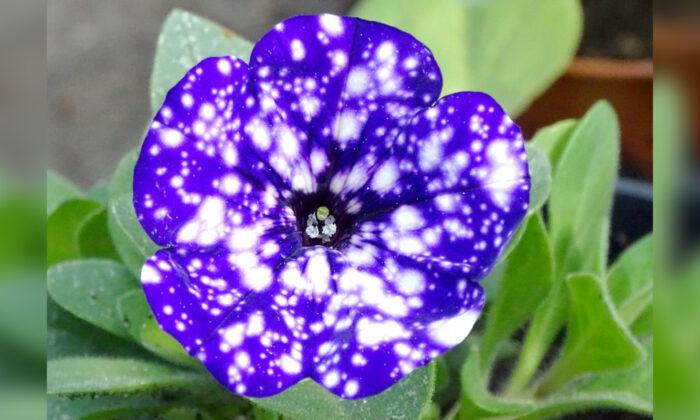Purple “night sky” petunias, or “galaxy flowers,” can bring the majesty of the cosmos to any yard, greenhouse, or window box.
The photogenic purple-and-blue galaxy flower—scientific name Petunia cultivars—gets its moniker from the smattering of bright white across its petals, reminiscent of a star-filled night sky.
No two flowers are ever the same, giving the optical illusion an extra dose of authenticity.

While any budding horticulturalist can harness the beauty of galaxy flowers for their own garden, there’s an insider trick to bear in mind if the blooms are to reach their full potential.
To have more of the night-sky look, this petunia flower should be planted with fertilizer in the early spring when the air and soil are still cool.
Galaxy flowers are temperature sensitive, and the color and intensity of their celestial spread rely upon planting them at the right time. The celestial-looking pattern of this unique flower, which was introduced in 2016, is “susceptible to the environment,” notes Green House Grower.

If the temperature increases too dramatically, the white patches may start to appear purple, lessening the cosmic effect; it’s a balancing act, but it puts the grower in the driving seat. If the grower wants more (or less) of a celestial show, they can always plant these petunias in a controlled indoor environment and manipulate the temperature to achieve the desired effect.
This starry plant is an annual and begins flowering from summer through fall. It may take more than one season to perfect the fine art of planting galaxy flowers, but the payoff must be seen to be believed.
Here are some selected photos of this unique flower. Enjoy!









